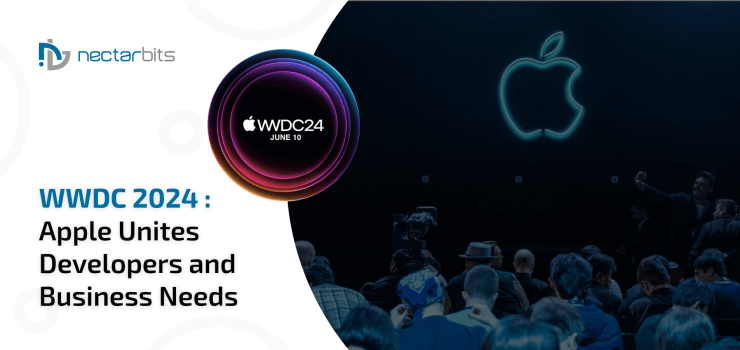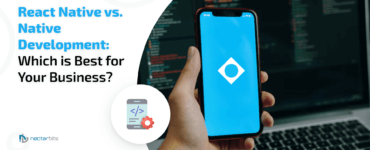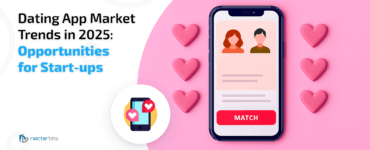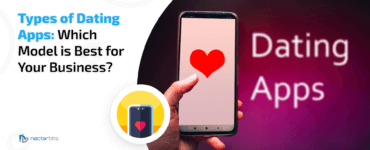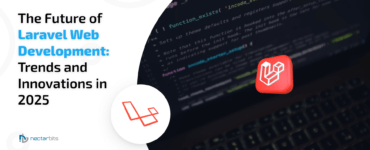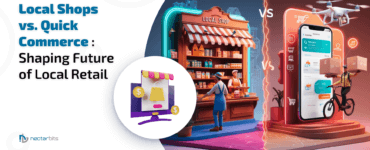While more than 1.3 billion iPhone users rejoice at the significant updates announced by the trillion-dollar conglomerate finally adopting the power of AI within their roster through Apple Intelligence, the company also used WWDC 2024 to release a slew of key technologies and exciting capabilities for enterprises and developers. This integrates the new ‘Apple Intelligence’ within their developer framework, utilizing the new technologies to benefit businesses and enterprises while providing a better quality of life for working-class users.
As Apple forays into the fastly evolving world of generative AI and a system-wide integration of Chat GPT 4 into its OS, the company has also ensured complete data privacy for its users and minimized personalization through data analytics and AI profiling.
This means that the next time Apple uses your meeting schedule or keyboard data to provide AI-powered results, it will be done completely offline and on-device unless you specifically allow the company to send your data to Open AI for cloud processing.
WWDC 2024 key takeaways for business owners and developers:-
While Apple showcased its fun AI generative functionalities such as Genmoji, Image Creation, and Siri using their new Apple Intelligence, AI and its developer updates also showcased major improvements in its business-facing domains as well. Here are some of the key takeaways of WWDC 2024 for businesses, digital service providers, and app developers:-
1. Swift 6: Major overhaul of Apple’s native development language
Celebrating its 10th anniversary since its initial release at WWDC 2014, Swift 6 is a major updation of the complete developer experience, making it easier to develop apps and interact with the language to make current development cycles more efficient and error-free.
Main Improvements:-
Apple’s new language mode within Swift 6 enables data-race safety by default and optimizes the language to run even on highly constrained systems. Apple also enhanced features by introducing Swift Charts to render vectorized plots and extensive datasets, and SwiftData history to track data changes during app development.
Use-Cases:-
Part of a larger open-source structure, developments in the core Swift language, and Apple’s newly introduced plans to provide a platform and ecosystem that expands to other devices and onboards new developers. This provides better adaptability and options for business owners looking to develop their native apps using Apple’s native language.
2. Apple Intelligence and Privacy: A New Standard in AI Security
Amidst a sea of incredible use cases of Artificial Intelligence in the corporate world, the worst drawback of AI is its data-driven methods that drastically reduce a user’s privacy. This can be catastrophic for an enterprise or business owner as confidentiality and data privacy is paramount for the survival of any business.
Thankfully, Apple has set a ‘New Standard’ for privacy in AI by assuring its users that they promise to keep their data private and secure, whether it’s on their devices or in the cloud.
Also, Apple showcased how most AI processing will be done on devices using a dedicated Neural Processing Unit (NPU) in their silicon. Even if they do share data with Chat GPT 4 to provide textual solutions, they will make sure your data is anonymous, IP-secure, and never personalized to your account or device.
Main Improvements:-
Apple Intelligence comes with a promise that the company will never store user data to train their AI, only using it to complete the request and then deleting it immediately.
Use-Cases:-
As AI slowly becomes a staple in our daily lives, with IDC’s market research predicting AI PCs to reach nearly 60% of all devices in the market by 2027, a company like Apple that doesn’t rely on data personalization for its revenue can revolutionize the business-centric market. Its focus on privacy is thus important for enterprises to adopt the benefits of AI without the drawbacks of data collection and personalization.
3. Enterprise Device Management – Better control over your interconnected Apple devices
Read More: https://developer.apple.com/videos/play/wwdc2024/10143
Improvements in the Device Management announced at WWDC 24 provide more granular control over your company devices using Apple OS. This includes both MacOS and iPhones, as employee work profiles can now access more data and restrict features in a more advanced manner.
Apple hardware and software have always been a popular choice in business solutions as they provide unmatched privacy and unification through their tightly-knit ecosystem. With the new update, Apple promises continual additions to finer tuning and controls over workplace devices to ensure better efficiency while minimizing confidential data leaks or sharing.
Main Improvements:-
Better enterprise efficiency, broadcast messaging through iMessage, and finer control to adequately manage a large pool of Apple devices within any business workplace.
Use-Cases:-
Business owners and upper management can now track their employees more efficiently, using targeted app analytics to ensure their employees are working to their best potential and minimizing distractions while rewarding higher performance metrics.
4. visionOS 2.0: Higher fidelity business meetings and development tools
Read More: https://www.apple.com/business/enterprise
Apple Vision Pro is arguably one of the most futuristic pieces of technology that has been released in the past decade, with its impeccable capabilities of providing life-like AR and VR capabilities that remain unparalleled by its competition. With Vision OS 2.0, Apple aims to expand its fidelity by allowing developers to provide deeper integration with its functionality and making it easier to control their apps ported to the wearable’s OS.
This means a deeper integration of MacOS and iPhone with visionOS to enable cross-functionality for both developers and corporate environments requiring additional screen estate to fit their workflow. Alongside custom hover effects being now supported in visionOS, the new version also enables a wider capability of 3D object capture using iPhone camera sensors to provide customizable business solutions on Apple Vision Pro.
Main Improvements:-
Better integration of visionOS with macOS and iOS to provide cross-platform navigation and app functionality. Also, the release of RealityKit to build immersive cross-platform applications that utilize the extensive native functionality of all Apple devices.
Use-Cases:-
Focusing on providing an overall unified experience across the Apple Ecosystem, the new visionOS 2.0 and RealityKit API provide developers with the opportunity to natively optimize their apps for VisionPro and also promote the headset’s utilization in corporate environments for both workflow and team communication.
5. Apple FinanceKit: Advanced Financial Management Apps for Businesses
Using on-device computing, Apple’s Finance Kit empowers bank, financial security, and wealth management applications on iOS and iPadOS to provide a much better and secure experience by unification of Apple Cash, Apple Card, and other financial payment options. This ensures that transactions and ongoing subscriptions can now be tracked more uniformly and every transaction is more secure and better encrypted.
With both businesses and users of wealth management applications increasing in numbers as our society slowly transcends to digital money over physical currency, Apple’s FinanceKit ensures that Apple’s ecosystem provides secure ways to convert users for purchase. Accessing financial data securely and personalizing experiences using private on-device processing, this feature allows both developers and users to gain a seamless banking experience.
Main Improvements:-
Apple FinanceKit allows new functionality to wealth management and banking applications, providing better digital money experiences for both normal users and corporate payment environments.
Use-Cases:-
Be it transacting subscription fees on iOS applications or sending money to other people, Apple’s new kit provides new ways for developers to make and track your finances easier.
6. App Intents: Integrating application features with core functionalities
Watch Here: https://www.youtube.com/watch?v=wirvkabKh8k
Apple’s introduction of the bleeding edge App Intents framework allows incredible deep integration of app functionalities with its core system features like Siri, controls and widgets, Apple Pencil, Shortcuts, the Action button, and more built on top of it. This helps create the best overall user experience as they can access app functionalities directly from Apple services and system features.
App Intents can also analyze user behavior and suggest core functionalities of applications directly to the user in favorable scenarios where Apple predicts the requirement of such a feature for the user. This further improves the discoverability of app features and makes them more accessible.
Main Improvements:-
App Intents provide relevant functionalities personalized for the user to be discovered easily through native system shortcuts and services.
Use-Cases:-
Users get a more unified experience with a smarter Siri and search powered by both ML and AI while developers can now program and integrate deeper-level core features of their apps and make them easily discoverable for users across devices within the Apple ecosystem through App Intent.
Conclusion: WWDC 2024 Delivers for Developers and Businesses
WWDC 2024 unveiled a new strategy for Apple, with a focus on artificial intelligence and a promise to keep users’ information private. Apple Intelligence marks a step up in the level of security of Artificial Intelligence where the data processing occurs locally and the user’s identity remains anonymous. While this is a positive change for average users, a greater real impact will be on the developers and enterprise solutions realm as they can comfortably allow AI to scour through their data and prompts without privacy concerns.
After the redesigned Swift 6 language, and the improvement of Enterprise Device Management, Apple is enabling developers to more secure and efficient applications. VisionOS 2.0 and RealityKit make augmented and virtual realities more alive for both business and entertainment applications. Meanwhile, Financekit can optimize financial operations and their control, strengthening Apple’s market stance in the context of the modern development of digital money.
Rather than letting AI simply augment its existing user interface, what Apple has done is set a stage allowing developers to innovate through the integration of AI into its basic applications. All in all, the focus on privacy, advanced and efficient developer tools, and forward-thinking vision of AI applications make Apple a technology giant that is sure to predetermine the further development of the tech world in the years to come.
Ready to develop your own iOS mobile application that is suitable for the growing Apple ecosystem, using these bleeding-edge innovations?


